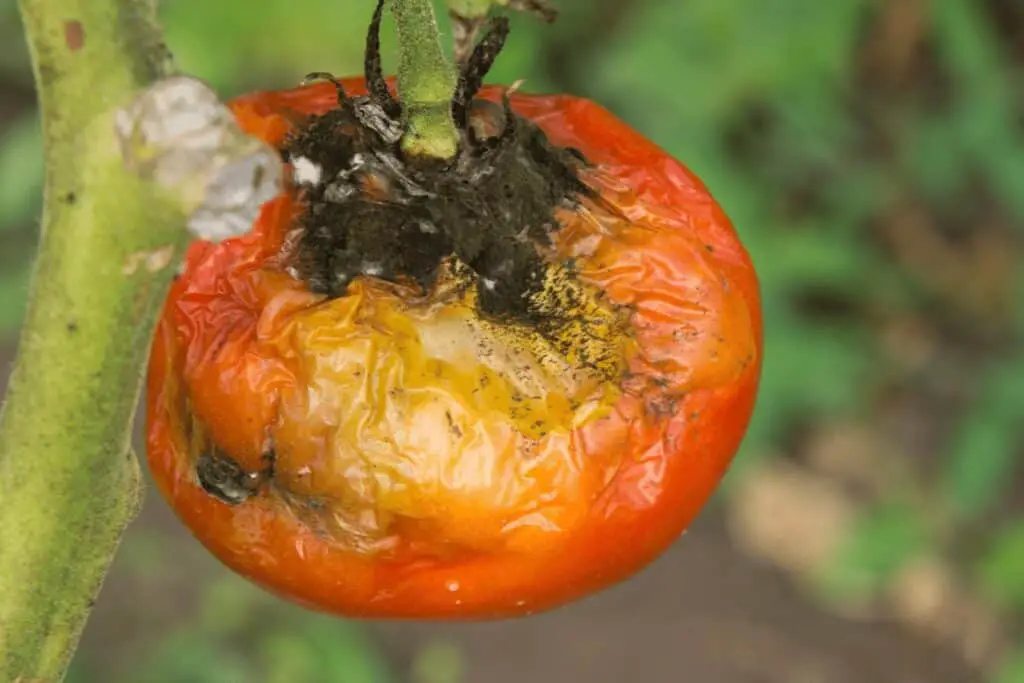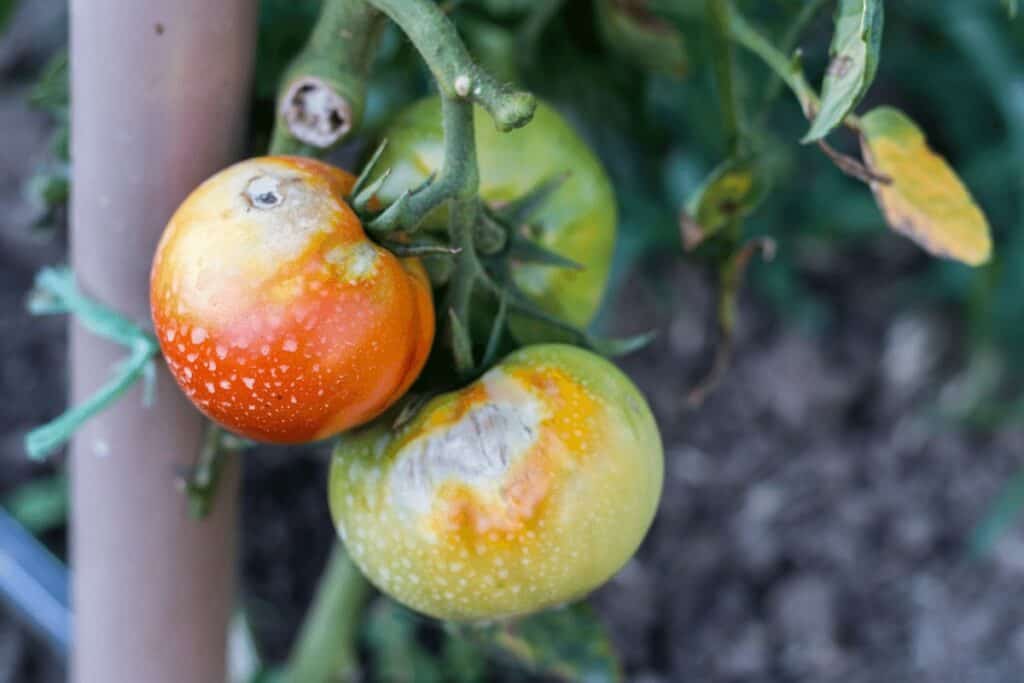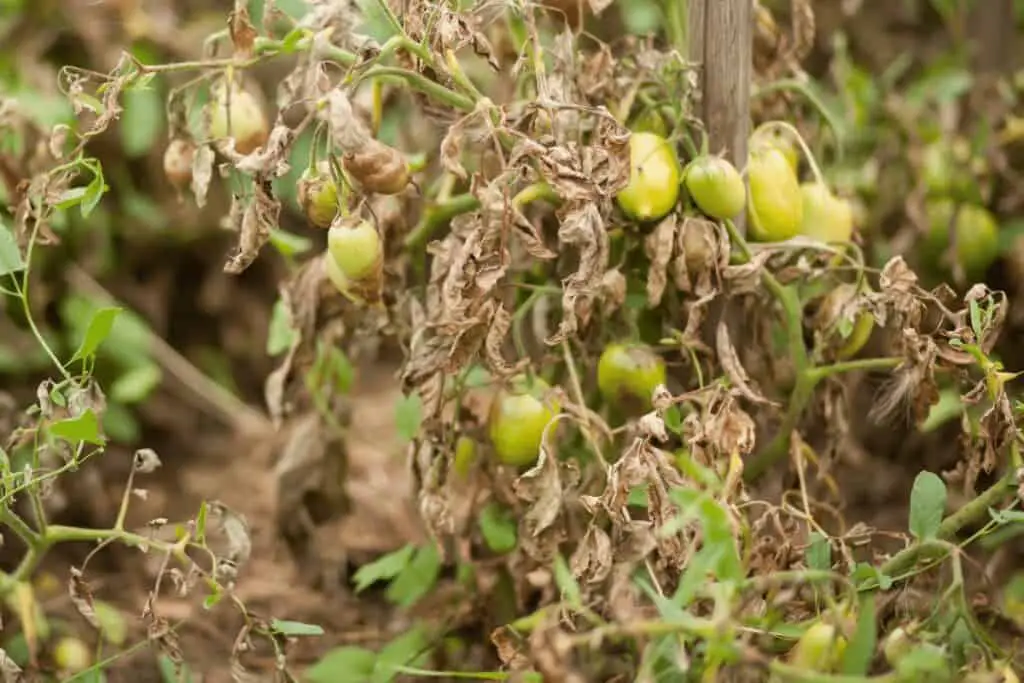You’re a tomato grower. You love nothing more than plucking ripe, red tomatoes off the vine and eating them straight away. But lately, you’ve noticed that your plants don’t seem to be doing so well.
The leaves are wilting and the fruit is starting to rot. It’s time to take action and figure out what’s wrong with your plants?
Different types of tomato plant diseases can cause a variety of problems for gardeners, including reduced fruit yield and stunted plant growth. However, there are some steps that can be taken to prevent or treat these diseases.
For example, good gardening practices such as crop rotation and regular pruning can help to reduce the chances of infection. In addition, affected plants should be removed and destroyed to prevent the spread of disease. By following these guidelines, gardeners can help to protect their tomato plants from disease.
It’s frustrating when your plants are sick and you don’t know what to do. But don’t worry, we’re here to help. In this article, we’ll go over some of the most common tomato plant diseases and their symptoms, so you can figure out what’s wrong with your plants and get them back to good health.

Overview of Different Types of Tomato Plant Diseases
1. Bacterial spot
Bacterial spot is one of the most common tomato plant diseases. The disease is caused by a bacteria called Xanthomonas pepper, which is found in pepper plants. The bacteria are spread by water, wind, and insects. The symptoms of bacterial spot include small, dark spots on the leaves and stems of the plant.
The spots may be surrounded by a yellow halo. The disease can also cause the fruit of the plant to rot. Bacterial spot is most common in warm, humid climates. The best way to prevent the disease is to avoid overhead watering and to prune affected leaves from the plant.
2. Early blight
Early blight is a fungal disease that can affect tomato plants. The disease is caused by the fungus Alternaria solani, which thrives in warm, wet conditions. Early blight often begins as small brown spots on the leaves of tomato plants. These spots eventually enlarge and turn black, leading to the death of the affected leaves. The fungus can also spread to the stem and fruit of the plant, causing further damage.
Early blight is most commonly seen in late summer when conditions are ideal for the growth of the fungus. However, the disease can occur at any time during the growing season. Early blight can be controlled through the use of fungicides. However, it is important to apply these products early in the season, before the fungus has a chance to take hold.
3. Late blight
Late blight is a fungal disease that can affect both tomatoes and potatoes. The disease is caused by the fungus-like organism Phytophthora infestans, which thrives in wet, humid conditions. Late blight is particularly damaging to tomato plants, as it can cause the fruit to rot. The disease can also affect potatoes, causing the tubers to develop dark patches and become distorted. late blight is difficult to control once it has taken hold, as the Phytophthora infestans spores can spread quickly through the air.
As a result, prevention is often the best strategy for dealing with late blight. tomato and potato growers can take steps to reduce the risk of late blight by planting resistant varieties, using fungicide treatments, and practicing good crop management practices.
4. Septoria leaf spot
Septoria leaf spot is a fungal disease that affects tomato plants. The disease is caused by the fungus Septoria lycopersici, which thrives in warm, humid conditions. Symptoms of septoria leaf spot include small brown spots on the leaves, which eventually turn yellow and drop off.
The fruit of the tomato plant may also be affected, developing small brown spots. If left unchecked, septoria leaf spot can cause the tomato plant to produce less fruit. To control the spread of the disease, it is important to remove affected leaves and fruits from the plant.
In addition, tomato plants should be given plenty of space to breathe, and their leaves should be kept dry. With proper care, tomato plants can recover from septoria leaf spot and produce a good crop of fruit.
5. Tomato mosaic virus
Tomato mosaic virus is a plant virus that primarily affects tomato plants. The virus is spread by insects, and it can also be transmitted through contaminated seedlings or compost. Symptoms of the virus include mottled leaves, stunted growth, and reduced fruit yield.
Tomato mosaic virus is difficult to control once it has infected a plant, and there is no cure. However, good gardening practices can help to prevent the spread of the virus. For example, tomato plants should be regularly inspected for signs of infection, and infected plants should be removed and destroyed. In addition, tomato plants should be grown in well-ventilated areas to reduce the risk of insect contamination.
By following these guidelines, gardeners can help to protect their tomato plants from the tomato mosaic virus.
6. Verticillium wilt
Verticillium wilt is a fungal disease that can affect a variety of crops, including tomatoes. The fungus invades the plant through the roots and spreads through the water-conducting tissues, causing the leaves to wilt and turn yellow.
In severe cases, the plant may die. While there is no cure for verticillium wilt, there are some steps that can be taken to prevent it. One is to avoid planting tomato plants in areas where the disease has been previously diagnosed. Another is to practice crop rotation, as this can help to reduce the chances of infection.
Finally, tomato plants should be pruned regularly to improve air circulation and prevent the build-up of moisture on the leaves, which can provide an ideal environment for the fungus to thrive.

Common Symptoms of Different Types of Tomato Plant Diseases
1. Bacterial spot: small, dark spots on the leaves; raised bumps on the fruit
2. Early blight: brown or black spots on the leaves; sunken, dark spots on the fruit
3. Late blight: large, dark spots on the leaves; soft, watery, rotting fruit
4. Septoria leaf spot: small, dark spots on the leaves; yellowing and wilting of leaves
5. Tomato mosaic virus: mottled or discolored leaves; stunted plant growth
6. Verticillium wilt: yellowing and wilting of leaves; stunted plant growth
Treatment Options for Different Types of Tomato Plant Diseases
1. Bacterial spot: remove and destroy affected leaves and fruit; treat with a copper-based fungicide
2. Early blight: remove and destroy affected leaves and fruit; treat with fungicide
3. Late blight: remove and destroy all plant debris; treat with fungicide
4. Septoria leaf spot: remove and destroy affected leaves; treat with fungicide
5. Tomato mosaic virus: remove and destroy affected leaves and fruit; do not replant in the same location
6. Verticillium wilt: remove and destroy affected plant; do not replant in the same location

Conclusion
Tomato diseases can be caused by many different factors, from pests and insects to environmental stressors. By understanding the most common types of tomato plant diseases and how to treat them, you can help keep your plants healthy and productive all season long.
If you notice any signs of disease in your tomatoes, don’t hesitate to take action. Early detection is key to stopping diseases before it becomes too widespread. Have you had any problems with tomato diseases this year? What solutions worked best for you?
FAQ
What are some common tomato plant diseases?
The most common types of tomato plant diseases include bacterial spot, early blight, late blight, septoria leaf spot, verticillium wilt, and fusarium wilt.
What are the symptoms of a diseased tomato plant?
The symptoms of a diseased tomato plant depend on the specific disease that is affecting the plant. However, some general symptoms include yellowing or wilting leaves, stunted growth, and dark spots on the leaves or fruit.
How can I prevent my tomato plants from getting diseases?
There are several things you can do to prevent your tomato plants from getting diseases. One is to practice crop rotation. Another is to inspect your plants regularly and remove any affected leaves or fruit. Finally, you can treat your plants with a preventative fungicide.
What is the best way to treat a diseased tomato plant?
The best way to treat a diseased tomato plant depends on the specific disease that is affecting the plant. However, some general treatment options include removing and destroying affected leaves and fruit, treating with a copper-based fungicide, or rotating crops.
Latest Posts
- What Types of Lettuces Can You Grow?

- How to Plant Onion Seeds for Maximum Germination

- How to Plant Parsnip Seeds for Maximum Germination

- How to Plant Mushroom Seeds for Maximum Germination

- How to Plant Lettuce Seeds for Maximum Germination

- How to Plant Kale Seeds: A Step-by-Step Guide to Maximum Germination Success!






